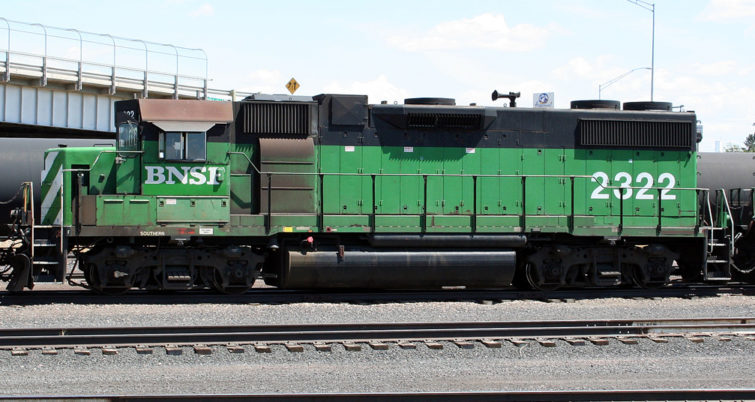Report Finds Brake Debris and Carbon Emission Particles from BNSF Locomotive Caused Fire
Written by Jennifer McLawhorn, Managing Editor
SKAMANIA COUNTY, Wash. – A report shows that a fire started in Washington this past Summer came from brake debris and carbon emission particles from a BNSF locomotive engine.
Earlier this summer, a fire ignited in Skamania County, Washington east of BNSF Tunnel 5. The fire burned through more than 500 acres and destroyed homes. Currently, a Washington Department of Natural Resources wildland fire investigation report shows that “debris from brakes and carbon emission particles from a BNSF locomotive engine” caused the fire.
According to the report obtained by Columbia Insight, a “BNSF train travelled through the origin area of the Tunnel 5 fire at aprx 1053 to 1100 hours on Sunday, 07/02/23. . . This train emitted some object(s) which started fire in 3 areas over an aprx 690-foot distance, all on the North side of the tracks and East of Tunnel 5. No probably evidence of another Human fire cause was located in the origin areas.”
The report is 22 pages long and it includes photographs and videos as well as “witness testimony and interviews with BNSF officials.” The report ends by stating, “after eliminating other probable causes for this fire, the Wildland Fire Investigation determined this fire was started by Human means: Railroad operations; Right of Way Vegetation Maintenance; Wheel Lubrication Parts; and Exhaust Particles.” The report was approved on August 25th by DNR.
DNR investigators are still focused on BNSF operations. Part of the report includes photographs snapped by two train enthusiasts that show “trains moving through the Gorge on the morning of the fire.” The report says the two train enthusiasts “spotted an old BNSF green and white locomotive leader engine with a newer orange and black engine behind it. The older lead engine had the number 2322 on it, and the newer orange and black engine had the number 2600. These engines were pulling 12-15 loaded cars which appeared to have lumber on them. This train was WB [westbound] from White Salmon, going toward Vancouver, WA.”
One of the enthusiasts is also a railroad employee and stated that “the green and white engine (2322) was possibly more than 40 years old and was likely non-turbocharged.” In the report, it shows that the railroader’s experience “with Union Pacific (UP) this green and white engine is not commonly used on open tracks in the Columbia River Gorge area. . . Being a non-turbocharged engine, it has a high likelihood of emitting diesel carbon emissions from the exhaust which could start a fire. [The man] added that it was UP practice to not use these older non-turbocharged engines in the Columbia Gorge during summer months due to their propensity to start fires. UP primarily used these older engines within train yards/depots, and not out on open tracks in summer months.”
During the inspection afterward, the lead DNR investigator observed metallic pieces, “many of which had sheared off or had sharply cut fine shiny edges.” The investigator reported that they “learned from the BNSF that these shiny metallic looking pieces were a solid polymer lubricating pad which rubs against the moving train wheels … I collected a total of 72 solid polymer pads and 2 possible carbon emission particles.”
The DNR report shows that other fires “started by the railroad in the same area” occurred in the days leading up to the Tunnel 5 fire. The report goes on to state that “BNSF track maintenance activities had ignited two other fires in the same vicinity just 5 and 8 days earlier. These two track maintenance fires occurred during hours of darkness when temperatures would have been cooler and humidity higher. A localized fire danger along the tracks in this general area should have been known to BNSF.”





